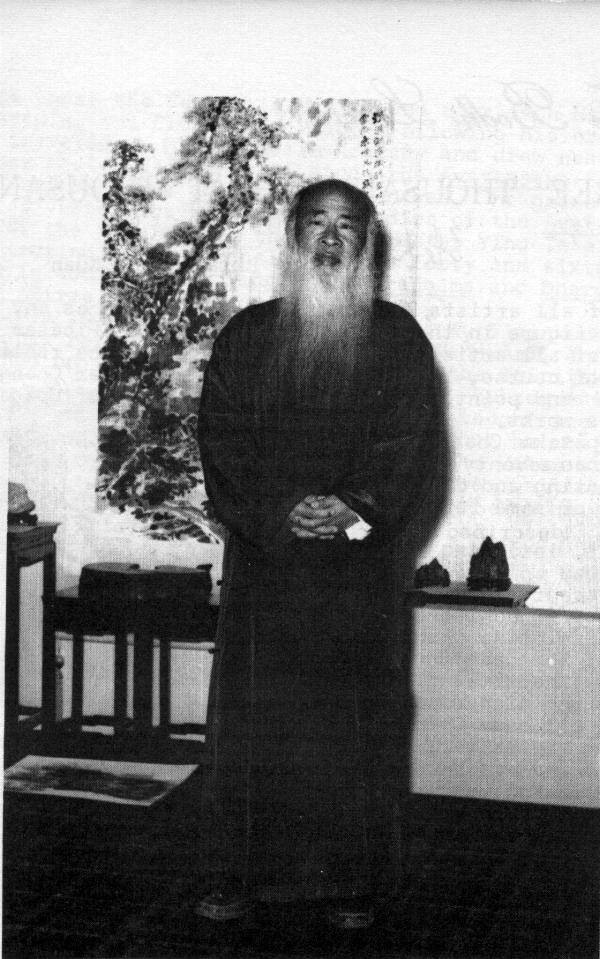
--By Bhiksu Heng Kuan
Of all artists, Picasso is as well known as any prominent figure in the world today. Yet when Picasso was asked of all artists who he respected most, he replied that, of course, it was the unsurpassed Master Chang Dai-chien, and pointed to his large collection of Upasaka Chang's works.
Upasaka Chang Dai-chien was born in Szechwan China more than seventy years ago, and learned the rudiments of painting and drawing from his mother who was an artist of some reputation. His early days as a painter can be described as a concentrated effort to master the art, including in particular Buddhist painting which intrigued Upasaka Chang who was and is a serious Buddhist adept. The circumstances surrounding part of his study of. Buddhist iconography exemplifies the vigorous self-discipline, which, along with his innate creative genius, form the foundation of his work.
By the time of the Lu K'o Bridge incident in 1937 during the Sino-Japanese war, Upasaka Chang's fame had spread all over China and had begun to grow abroad. Shortly thereafter, he was kidnapped by the Japanese in Peking, and was held in very trying circumstances until the following year when he managed to escape to Szechwan with much difficulty. After living there for two years he made an expedition to the Tun Huang caves in Kan Su Province on China's western frontier, famous repositories for Buddhist scriptures and other material during the T'ang dynasty, the walls of which are covered with beautiful Buddhist iconography. At Tun Huang, and especially in the Mo Kao and I Lin caves, he copied cave paintings and drawings, more than two hundred in all, a task that took him two and a half years.
During the first eight months of his stay at Tun Huang, his life was especially bitter. He was not wealthy, and as he had devoted his life to painting, had no steady source of income; as a consequence, he lived in the caves and ate only one meal a day, and so was able to continue his work. He persisted in his resolve, and toward the end of the first year word of his work spread and he received aid from many people who came to visit him. Already famous since the end of the Ch'ing dynasty. Tun Huang's fame spread even more widely as a result of Upasaka Chang’s work there.
Upasaka
Chang is respected and regarded highly by all who meet him, not only for his
intelligence and unsurpassed mastery of his art, but for his sincerity and
friendliness—he enraptures young and old with wonderful stories. With respect
to his paintings, one discerning and perspicacious critic said, “He has kung
fu,” a Chinese term which, in this case, translates as a rare
combination of detached and easy observation, creative genius, and consummate
skill.
Upasaka Chang’s works have been shown in exhibitions in major cities all over the world, are greatly appreciated everywhere, and are
sought after by the most respected connoisseurs of fine art, museums, and
influential world leaders, among them the Queen Elizabeth II who recently
invited Upasaka Chang to visit Great Britain. An exhibition of his work will be
shown at the Center of Asian Art and Culture in Golden Gate Park from November
16th to December 17, 1972. The exhibit will present works from his
whole career, both exhibit will present works from his whole career, both
traditional paintings and some with individual new trends. Anyone who sees his
work will immediately recognize it as the creation of a master, work which has
not been matched anywhere else in the world.

UPASAKA
CHANG DAI-CHIEN
Standing before one of his works